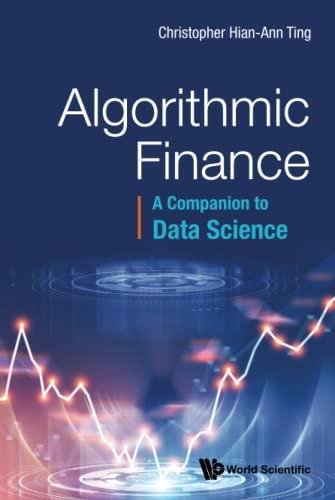Question
NOTE: Do only part 2 and 3: The following assignment deals with the construction of a 500 MW offshore wind farm. Following the decision to
NOTE: Do only part 2 and 3:
The following assignment deals with the construction of a 500 MW offshore wind farm. Following the decision to construct the wind farm, it will take 4 years for the design, construction, purchase, production and construction of the turbines until they can go into operation. The time when the turbines begin operation is referred to as time 0, and the costs for the previous 4 years have been:
year -4: 200 million DKK
year -3: 500 million DKK
year -2: 1,500 million DKK
year -1: 2,000 million DKK
After year 20, it is expected to no longer be profitable to operate the turbines, therefore they must be removed at an expected cost of 500 million DKK. The cost of operating and maintaining the turbines is estimated to be 800 million DKK/year for years 1-20. Energy production from the turbines, of course, depends on the wind speed, which can always vary. Based on detailed measurements of wind velocity in that location, it is estimated that the wind farm should produce 2,300,000 MWh annually. However, the uptime of the turbines is assumed to be only 95%, and it is further assumed that there is a loss of electricity in the cables and substations, so net production is only 2,000,000 MWh/year. Investment amounts are attributable to the beginning of the years, while receipts are attributable to the end of the years. A discount rate of 10% per year is used.
Find the following:
Part I:
1 What is the capital value of the investments in the four years before the turbines are put into operation, calculated at time 0?
2. If the electricity price is assumed to be constant over the 20 years, what should it be, at a minimum, for the investment in the offshore wind farm to be profitable? For onshore wind turbines, it is most likely - as above - that the life span is 20 years. However, evidence suggests that wind turbines have a longer life span at sea due to lower turbulence in the wind over the ocean.
3. If life expectancy increases from 20 to 25 years, what should the minimum electricity
price be for the investment in the offshore wind farm to be profitable?
For the following question, life expectancy is assumed to be 20 years, but after 20 years, a major repair and technological upgrading of the turbines will be made, extending the life span by 10 years. The assumptions for question 1 are assumed to be valid, including the expectation of costing 500 million DKK for the turbines to be removed after termination of operation. However, the price of electricity in years 21-30 is expected to be only 0.50 DKK/kWh.
4. If an investment of 1,000 million DKK after 20 years will make it possible to increase the life of the turbines to 30 years, would such an investment be profitable?
Part II:
Simulate the effect of uptime of the turbines (assumed initially 95%) on the NPV (use 95% confidence interval). In your simulation assume this factor follows a uniform distribution Uniform[85%-98%].
Part III:
Perform a sensitivity analysis on the production rate 2,000,000 MWh/year over the NPV.
Step by Step Solution
There are 3 Steps involved in it
Step: 1

Get Instant Access to Expert-Tailored Solutions
See step-by-step solutions with expert insights and AI powered tools for academic success
Step: 2

Step: 3

Ace Your Homework with AI
Get the answers you need in no time with our AI-driven, step-by-step assistance
Get Started


